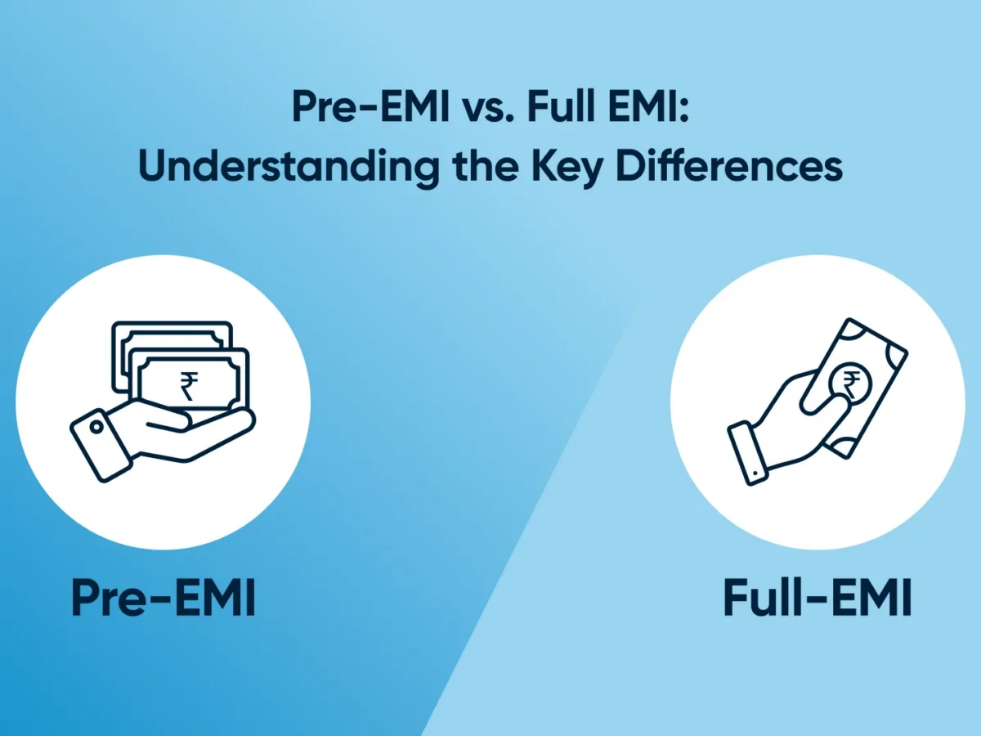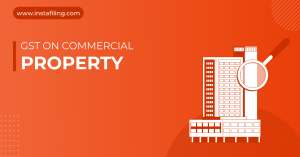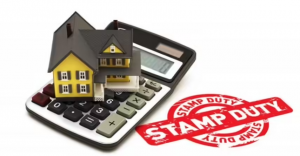Buying your dream home is one of the most significant financial commitments you’ll ever make. Whether you’re opting for an under-construction property or a ready-to-move-in apartment, the type of EMI you choose can heavily influence your long-term financial health. One of the most debated questions among homebuyers today is ,“Which is better, Pre-EMI or Full EMI?”
Let’s break this down thoroughly so you understand not just what each term means, but which one suits your goals, budget, and property type best. This comprehensive guide compares Pre-EMI vs Full EMI, the implications of each, and how to decide based on your current situation. We’ll also answer all related questions you may have in layman’s terms.
Also Read:- Why Your CIBIL Score Matters for Getting a Home Loan in 2026
What is Pre-EMI and When is it Applicable?
Pre-EMI refers to the interest component you pay to the bank during the property’s construction phase. In this case, the lender disburses the loan amount in stages based on the construction progress, and you only pay interest on the amount disbursed so far, not the entire loan.
When is Pre-EMI applicable?
Pre-EMI applies if you purchase an under-construction property and opt to begin repayment only after taking possession.
What is Full EMI and How Does it Work?
In Full EMI, the EMI consists of both the principal and the interest from the time the first disbursement is made—regardless of whether the property is ready or still under construction.
Full EMI starts immediately, even during construction, but it helps you begin repaying your principal early, thereby reducing the total interest payable in the long run.
Which is Better, Pre-EMI or Full EMI?

The choice between Pre-EMI and Full EMI depends on your financial goals:
- Choose Pre-EMI if you want a lower monthly outflow during construction and prefer to manage other investments or rent.
- Choose Full EMI if you want to start reducing the principal early and save on total interest in the long term.
From a financial planning perspective, Full EMI is generally a better option for long-term savings, while Pre-EMI is suitable for short-term affordability.
Also Read:- Section 80EEA: Deduction for interest on Home Loan – Housiey
Is Pre-EMI a Good Option or a Loss?
Wondering “Is Pre-EMI a loss?” or “Is Pre-EMI a good option?”
Pre-EMI is not inherently bad—it’s useful if you need to minimize cash outflow during construction. However, you pay only interest during this time, so your principal remains untouched, meaning you end up paying more in the long run. So yes, it can be a loss in the bigger financial picture if construction is delayed.
Can We Pay Full EMI for Under Construction Property?

Yes, you absolutely can pay Full EMI for under-construction property even though the property is not ready. Many banks offer this option upon request, and doing so helps in reducing the interest burden faster.
Can I Pay My Full EMI in Advance or Convert EMI to Full Payment?
Yes, you can pay your full EMI in advance, or even convert EMI to full payment depending on the bank’s policy. Prepayment of EMI or the entire outstanding loan amount reduces your interest burden significantly but may include prepayment charges.
What Are the Drawbacks of EMI and Pre-EMI?
Let’s tackle “What are the drawbacks of EMI?” and “What are the disadvantages of Pre-EMI?”
- For EMI: Higher monthly outflow could restrict your disposable income.
- For Pre-EMI: You don’t reduce the principal early, resulting in a longer loan tenure and higher interest in total. Plus, you may face tax claim complications.
Also Read:- Home Loan Subsidy 2025-26: Criteria, Benefits, Process & More
Does Pre-EMI Reduce Principal Amount?
No, Pre-EMI only covers the interest component, so your principal remains untouched during the construction phase. This leads to higher interest in the long term.
Can I Claim Pre-EMI Interest in Taxes?
Yes, you can claim pre-EMI interest, but only after possession of the property and in five equal installments over five years under Section 24 of the Income Tax Act.
Does Pre-Paying EMI Affect Credit Score?
Pre-paying EMI reflects positively on your credit score, especially if done regularly and without default. It indicates financial discipline and lowers your outstanding balance.
Also Read:- How CIBIL Score Affects Your Home Loan Approval in 2026
Can I Pay 2 EMI in One Month?
Yes, you can pay two EMIs in one month as an advance payment. This may reduce your tenure or total interest payable, based on your lender’s policy.
What is the EMI Formula and How to Calculate It?

The standard EMI formula is:
EMI = [P x R x (1+R)^N] / [(1+R)^N – 1]
Where:
- P = Principal loan amount
- R = Monthly interest rate
- N = Number of monthly installments
You can also use online EMI calculators for ease.
How to Pay Full Amount of EMI?
To pay the full amount of EMI, simply pay the scheduled EMI as per the loan repayment plan. If you wish to prepay, visit your lender’s branch or use their online portal to repay partially or in full.
Is It Better to Buy on EMI or Full Payment?
“Is it better to buy on EMI or full payment?” depends on your liquidity.
- Buy on EMI if you don’t want to disturb your current investments or savings.
- Pay in full if you want to avoid interest and have a lump sum ready.
Both options have pros and cons, but paying in full saves a significant amount in interest.
What Are the Benefits of No Pre-EMI?
When there’s no Pre-EMI, you start repaying the principal early, reducing your overall interest cost. It also ensures faster equity build-up on your property.
What Are the Disadvantages of No-Cost EMI?

Though attractive, no-cost EMI often includes hidden costs like processing fees or inflated product pricing. In home loans, this concept doesn’t truly exist—interest is always charged unless waived by the lender for a limited time.
Pre-EMI vs Full EMI: Key Comparison Table
| Feature |
Pre-EMI |
Full EMI |
| When It Starts |
After disbursement |
After disbursement |
| Monthly Outflow (Initially) |
Lower |
Higher |
| Principal Repayment |
Starts after possession |
Starts immediately |
| Ideal For |
Short-term savings |
Long-term interest savings |
| Risk in Construction Delay |
Higher |
Lower |
| Tax Benefits |
Only after possession |
Starts immediately after disbursement |
| Loan Tenure |
Longer |
Shorter |
| Total Interest Paid |
Higher |
Lower |
Conclusion: How to Make the Right Choice for Your Dream Home?
Choosing between Pre-EMI and Full EMI ultimately depends on your financial stability, risk appetite, and timeline of home possession. If you’re someone who has to pay rent during the construction phase or wants to conserve monthly cash flow, Pre-EMI is a softer start. But remember, it comes at the cost of higher total interest.
On the other hand, if you can afford it, Full EMI is the smarter option. It helps reduce your overall loan burden, brings in tax advantages sooner, and builds your home equity faster.
At Housiey, we guide you through these complex decisions by connecting you directly with trusted builders without exposing your contact details to multiple brokers. Our aim is to make your home-buying journey smooth, transparent, and stress-free.
If you found this blog helpful, don’t miss our detailed guide on What To Do If Home Loan EMI Bounces in India in 2026, a must-read for every home loan borrower.
FAQs
Buying your dream home is one of the most significant financial commitments you’ll ever make. Whether you’re opting for an under-construction property or a ready-to-move-in apartment, the type of EMI you choose can heavily influence your long-term financial health. One of the most debated questions among homebuyers today is ,“Which is better, Pre-EMI or Full EMI?”
Let’s break this down thoroughly so you understand not just what each term means, but which one suits your goals, budget, and property type best. This comprehensive guide compares Pre-EMI vs Full EMI, the implications of each, and how to decide based on your current situation. We’ll also answer all related questions you may have in layman’s terms.
Also Read:- Why Your CIBIL Score Matters for Getting a Home Loan in 2026
What is Pre-EMI and When is it Applicable?
Pre-EMI refers to the interest component you pay to the bank during the property’s construction phase. In this case, the lender disburses the loan amount in stages based on the construction progress, and you only pay interest on the amount disbursed so far, not the entire loan.
When is Pre-EMI applicable?
Pre-EMI applies if you purchase an under-construction property and opt to begin repayment only after taking possession.
What is Full EMI and How Does it Work?
In Full EMI, the EMI consists of both the principal and the interest from the time the first disbursement is made—regardless of whether the property is ready or still under construction.
Full EMI starts immediately, even during construction, but it helps you begin repaying your principal early, thereby reducing the total interest payable in the long run.
Which is Better, Pre-EMI or Full EMI?

The choice between Pre-EMI and Full EMI depends on your financial goals:
- Choose Pre-EMI if you want a lower monthly outflow during construction and prefer to manage other investments or rent.
- Choose Full EMI if you want to start reducing the principal early and save on total interest in the long term.
From a financial planning perspective, Full EMI is generally a better option for long-term savings, while Pre-EMI is suitable for short-term affordability.
Also Read:- Section 80EEA: Deduction for interest on Home Loan – Housiey
Is Pre-EMI a Good Option or a Loss?
Wondering “Is Pre-EMI a loss?” or “Is Pre-EMI a good option?”
Pre-EMI is not inherently bad—it’s useful if you need to minimize cash outflow during construction. However, you pay only interest during this time, so your principal remains untouched, meaning you end up paying more in the long run. So yes, it can be a loss in the bigger financial picture if construction is delayed.
Can We Pay Full EMI for Under Construction Property?

Yes, you absolutely can pay Full EMI for under-construction property even though the property is not ready. Many banks offer this option upon request, and doing so helps in reducing the interest burden faster.
Can I Pay My Full EMI in Advance or Convert EMI to Full Payment?
Yes, you can pay your full EMI in advance, or even convert EMI to full payment depending on the bank’s policy. Prepayment of EMI or the entire outstanding loan amount reduces your interest burden significantly but may include prepayment charges.
What Are the Drawbacks of EMI and Pre-EMI?
Let’s tackle “What are the drawbacks of EMI?” and “What are the disadvantages of Pre-EMI?”
- For EMI: Higher monthly outflow could restrict your disposable income.
- For Pre-EMI: You don’t reduce the principal early, resulting in a longer loan tenure and higher interest in total. Plus, you may face tax claim complications.
Also Read:- Home Loan Subsidy 2025-26: Criteria, Benefits, Process & More
Does Pre-EMI Reduce Principal Amount?
No, Pre-EMI only covers the interest component, so your principal remains untouched during the construction phase. This leads to higher interest in the long term.
Can I Claim Pre-EMI Interest in Taxes?
Yes, you can claim pre-EMI interest, but only after possession of the property and in five equal installments over five years under Section 24 of the Income Tax Act.
Does Pre-Paying EMI Affect Credit Score?
Pre-paying EMI reflects positively on your credit score, especially if done regularly and without default. It indicates financial discipline and lowers your outstanding balance.
Also Read:- How CIBIL Score Affects Your Home Loan Approval in 2026
Can I Pay 2 EMI in One Month?
Yes, you can pay two EMIs in one month as an advance payment. This may reduce your tenure or total interest payable, based on your lender’s policy.
What is the EMI Formula and How to Calculate It?

The standard EMI formula is:
EMI = [P x R x (1+R)^N] / [(1+R)^N – 1]
Where:
- P = Principal loan amount
- R = Monthly interest rate
- N = Number of monthly installments
You can also use online EMI calculators for ease.
How to Pay Full Amount of EMI?
To pay the full amount of EMI, simply pay the scheduled EMI as per the loan repayment plan. If you wish to prepay, visit your lender’s branch or use their online portal to repay partially or in full.
Is It Better to Buy on EMI or Full Payment?
“Is it better to buy on EMI or full payment?” depends on your liquidity.
- Buy on EMI if you don’t want to disturb your current investments or savings.
- Pay in full if you want to avoid interest and have a lump sum ready.
Both options have pros and cons, but paying in full saves a significant amount in interest.
What Are the Benefits of No Pre-EMI?
When there’s no Pre-EMI, you start repaying the principal early, reducing your overall interest cost. It also ensures faster equity build-up on your property.
What Are the Disadvantages of No-Cost EMI?

Though attractive, no-cost EMI often includes hidden costs like processing fees or inflated product pricing. In home loans, this concept doesn’t truly exist—interest is always charged unless waived by the lender for a limited time.
Pre-EMI vs Full EMI: Key Comparison Table
| Feature |
Pre-EMI |
Full EMI |
| When It Starts |
After disbursement |
After disbursement |
| Monthly Outflow (Initially) |
Lower |
Higher |
| Principal Repayment |
Starts after possession |
Starts immediately |
| Ideal For |
Short-term savings |
Long-term interest savings |
| Risk in Construction Delay |
Higher |
Lower |
| Tax Benefits |
Only after possession |
Starts immediately after disbursement |
| Loan Tenure |
Longer |
Shorter |
| Total Interest Paid |
Higher |
Lower |
Conclusion: How to Make the Right Choice for Your Dream Home?
Choosing between Pre-EMI and Full EMI ultimately depends on your financial stability, risk appetite, and timeline of home possession. If you’re someone who has to pay rent during the construction phase or wants to conserve monthly cash flow, Pre-EMI is a softer start. But remember, it comes at the cost of higher total interest.
On the other hand, if you can afford it, Full EMI is the smarter option. It helps reduce your overall loan burden, brings in tax advantages sooner, and builds your home equity faster.
At Housiey, we guide you through these complex decisions by connecting you directly with trusted builders without exposing your contact details to multiple brokers. Our aim is to make your home-buying journey smooth, transparent, and stress-free.
If you found this blog helpful, don’t miss our detailed guide on What To Do If Home Loan EMI Bounces in India in 2026, a must-read for every home loan borrower.
FAQs











